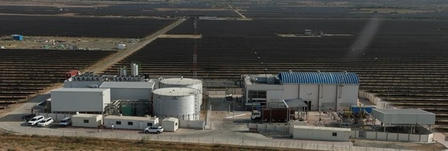Ahmedabad, 23 June (IANS). Adani New Industries Limited (ANIL) on Monday announced the success of India’s first off-grid 5 MW Green Hydrogen Pilot Pilot in Kutch, Gujarat, which is a major milestone in the country’s clean energy transition.
The state-off-the-art plant is operated by 100 percent solar energy and is integrated with the battery energy storage system (BESS), allowing it to be completely off-grind.
The company said in a statement that the plant represents a new paradigm in decentralized, renewable energy -powered hydrogen production.
The company said, “The ANIL pilot plant is India’s first off-grid 5 MW green hydrogen facility, which has a fully automated, clown-loop electrovilizer system, which is designed to react dynamically to renewable energy inputs in real time. It is especially efficient in addressing solar energy, safety, safety, safety, safety, safety, safety and performance, ensuring efficiency, safety and performance in solar energy. Provides flexibility. “
This success of the company reflects the commitment of Adani Group for innovation, sustainability and leadership in the emerging Green Hydrogen Economy.
The plant supports India’s ambition to become a global hub for green hydrogen production and install a benchmark for renewable-to-initial applications in the hard-to-ath sector.
The hard-to-aest sector is called them, where it is particularly challenging to reduce carbon emissions due to the underlying process characteristics or technical limitations.
The pilot plant also works as a proof of concept before ANIL’s upcoming Green Hydrogen Hub in Mundra, Gujarat, a project that contributes significantly to India’s low-carbon future.
Green hydrogen is expected to play an important role in achieving dearbonizing and global net zero targets in sectors such as fertilizer, refining and heavy transport.
The initiative is associated with the National Green Hydrogen Mission (NGHM), which is a major program of the Government of India, which aims to reduce import dependence, increase energy self-sufficiency and accelerate the dearness of energy-intensive industries.
All this is to complete the ‘self -sufficient India’ vision of the country.
India’s purpose is not only to meet its domestic demand but also to become a major global exporter of green hydrogen by making a meaningful contribution to Dicarbonization Action by 2030.
To pursue this change, the government started NGHM in 2023 with an initial allocation of $ 2.4 billion. India’s vision is to achieve energy independence by 2047 and reach net zero emissions by 2070.
-IANS
SKT/ABM






